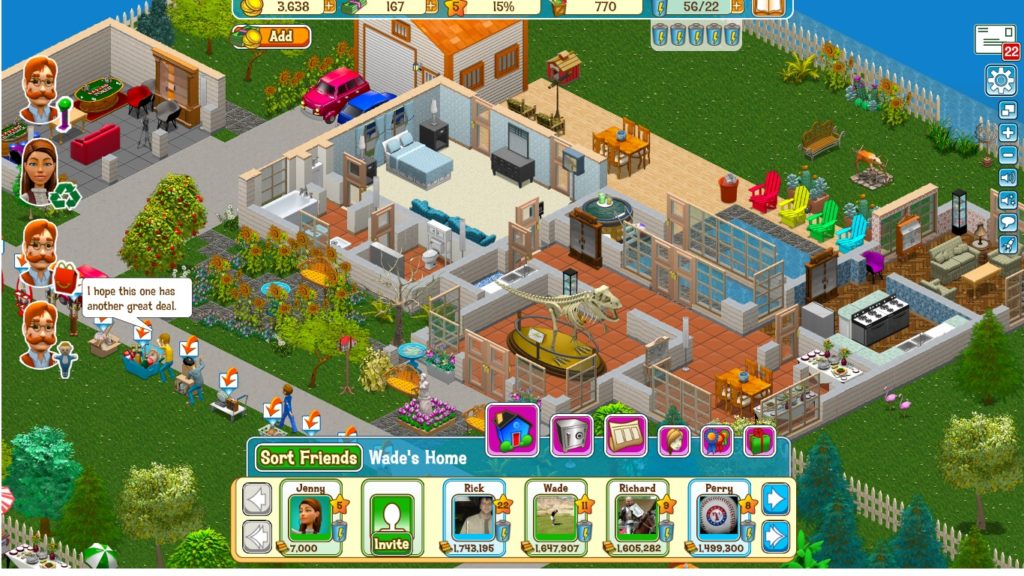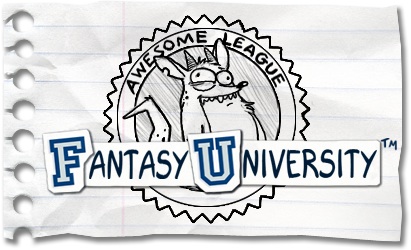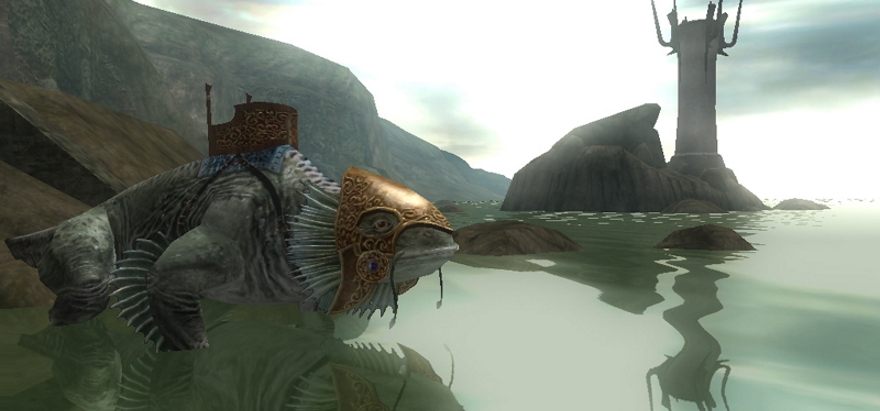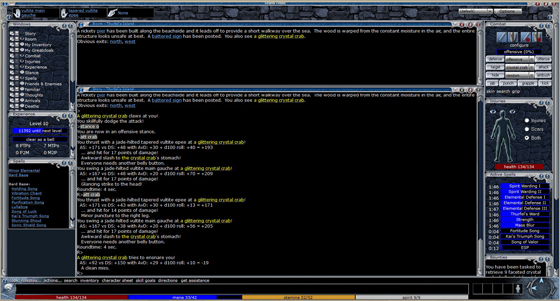Reverse chronological, but you can start reading at either end, it’s cool.
I was the principal developer on this game, and had my hands in everything, primarily including refactoring systems for new gameplay, wrangling Sony’s TRC and submission process, and authoring new sound effects and videos.
I can’t publicly display any media of this one – I’d be happy to in person! Otherwise, writeup coming soon.
I was the principal developer on this game, and had my hands in every part of development, including:
- architected all major systems
- wrote Python scripts to chop up the puzzle FBX groups in Blender
- ensured Sony TRC compliance
- managed the build process, packaged releases and patches for Steam and PS4
- handled all sound design and wrote this chill theme song
Following on the heels of Guardians, my responsibilities on Champions of Canaan were similarly managerial, but I was able to get out of TargetProcess long enough to implement gamepad support and set up OSVR integration (we had a partnership with Razer to bundle our OSVR-supporting game with their OSVR headset). I also once again managed the extensive voiceover production process, although my favorite application of voice in this game was actually leftover from the David vs. Goliath fight in Guardians. Every actor who came in for that game also recorded a bunch of pro-Goliath or pro-David crowd yells, and we used a pretty small subset, leaving some really great stuff on the table; so I chopped up a bunch and built a crowd reaction system based on the player’s behavior. A player who spent a lot of time rolling around and avoiding combat would earn a mocking “Pathetic!” or “Fight, coward!”, and some of the actors got really bloodthirsty with their “Stab him in the eyes!” Ah, good times.
Also not a lot of devs can say they had something on the Ouya, so I have that going for me, which is nice.
I came on board as one of two Senior Programmers as the studio spun up, before transitioning into a Lead Programmer role as our engineering staff increased, and finally moving into a Technical Director position as the studio grew to accommodate more projects.
I was initially responsible for developing a wide array of things on FIVE: Guardians – designer tools, Excel importers, loot, inventory, enemy AI, stealth, dynamic audio, et al. As the project progressed and I necessarily moved into a more managerial role, I managed the engineering team schedule and duties, helped with project and studio planning, and wrangled the extensive voiceover production with Bay Area Sound.
Scripture Champion was a mobile Bible trivia game that was a pet project of sorts of one of Kingdom’s primary investors. We had recently purchased a mobile studio and all of its games, and since we needed a small mobile team to maintain and improve that newly acquired stable, we decided to fill their spare time with a simple game, for which audio was my only real involvement (besides a brief stint managing the team before FIVE duties pulled me away – and they were frankly a pretty self-managing team regardless).
The original name Qible (which rhymes with Bible, not quibble!) proved unsurprisingly confusing for people, so we rebranded it as Scripture Champion. After development, maintenance of the AWS-hosted node.js servers fell to me, but the entire product was recently removed from production (if you came here looking for a Bible trivia game to play, sorry you had to hear it like this).
The Clearasil Ultra Fast Back To School Dash was an endless-ish runner that found the player careening down a high school hallway on a skateboard, ollieing over and otherwise dodging various school-related obstacles like blackboards, janitor mop buckets, and desks. Little packages of Clearasil served as powerups that increased the player’s speed, making them vital to the goal of reaching the end of the (not-actually-endless) course in the shortest possible time. The second week featured zombies!
Recording the primary sound effects for this was incredibly fun, as I got to strap my field recorder to the bottom of my skateboard and ride around the cul-de-sac. The music, unfortunately, is a little buried in the overall mix, so I’ll embed it separately as well.
Slim Jim Spice Rescue was a sidescrolling endless runner platformer that required the player to collect good Slim Jims as weapons, while avoiding the nauseating Brand X snacks. Timing again was the name of the game here, but your ultimate goal was the redemption of your wayward uncool bros, by finding and whacking each said bro with a daikatana-sized Slim Jim, instantly making them 9001% cooler. I can only hope the music adequately reflects this state of affairs.
If anything, this music is a little hot in the mix, but I’ll embed it separately anyway because I like it.
Following my eventual departure from Portalarium, I moved into a more technical contract role at Hellfire, providing support and improvements to their PHP/MongoDB backend, setting up automatic backup systems, and adding a graphical frontend to their existing metrics solution. I also set up and helped admin a Facebook app used for giveaway purposes for one of Hellfire’s other games, Novus Prime.
 Richard Garriott’s Ultimate Collector: Garage Sale was a Flash-based Facebook game with a node.js backend, in which the player rummaged sidewalk sales and stores in search of just the right piece of esoteric nostalgia to complete their collection of… whatever. The items were largely drawn from Richard’s personal collection of oddities, including antique cameras, various medieval medical devices and weapons, and a painting by an elephant named Kamsan.
Richard Garriott’s Ultimate Collector: Garage Sale was a Flash-based Facebook game with a node.js backend, in which the player rummaged sidewalk sales and stores in search of just the right piece of esoteric nostalgia to complete their collection of… whatever. The items were largely drawn from Richard’s personal collection of oddities, including antique cameras, various medieval medical devices and weapons, and a painting by an elephant named Kamsan.
I started out building movement/navigation systems like pathfinding, helped set up the microtransaction flow, and then moved into the backend, integrating a PHP-based Stomp/ActiveMQ messaging queue system to help direct traffic among the various servers.
When that was wrangled, instead of returning to Ultimate Collector, I began building core platform tools for the team/game that became Shroud of the Avatar. The primary focus was a groups-based permission system for accessing tools and assets, using C# and MariaDB. I also integrated player metrics via Kontagent, and helped to establish an acquisition funnel.
Faxion Online was a Heaven and Hell themed MMO with a heavy focus on team-based PVP. Each of the seven deadly sins was represented graphically as one of the main realms in the game, with Heaven and Hell being restricted to the respective teams. Hell had the best music in the game, to the surprise of no one.
During my stint, my primary contributions were the quest systems, dynamic audio/music systems (in support of the inimitable Damian Kastbauer), loot distribution systems and designer tools, and lots and lots of UI.
 Fantasy University was Simutronics’ entry to social games, perfect for Facebook and its rapidly growing captive audience. FU was an irreverent and clever RPG-lite browser game with a microtransaction shop, pop culture puns for days, and a charming hand drawn art style, courtesy of Tracy Butler. It was developed primarily in Ruby (on Rails) and JavaScript. I architected a number of key systems such as combat, inventory, and quests, before personnel changes at the studio placed me into a design leadership role, but ultimately, I wound up leaving the studio to pursue other opportunities in Austin.
Fantasy University was Simutronics’ entry to social games, perfect for Facebook and its rapidly growing captive audience. FU was an irreverent and clever RPG-lite browser game with a microtransaction shop, pop culture puns for days, and a charming hand drawn art style, courtesy of Tracy Butler. It was developed primarily in Ruby (on Rails) and JavaScript. I architected a number of key systems such as combat, inventory, and quests, before personnel changes at the studio placed me into a design leadership role, but ultimately, I wound up leaving the studio to pursue other opportunities in Austin.
Naming the town’s discount clothing store “Pants Half-Off” remains perhaps the greatest achievement of my career.
 Following the successful relaunch of GemStone IV, the Simutronics development staff shifted focus to what were frankly pretty exciting times, our own from-scratch graphical MMO Hero’s Journey, to compete with the likes of UO, EQ, and Asheron’s Call! Most of our small but passionate team wore a wide array of hats, and I would find myself worldbuilding one day, developing UI the next, helping design the combat system, scripting gameplay sequences, etc. A year into development, our CEO agreed to let me take on the additional role of acting Audio Director – partly out of concern that we were neglecting audio, but mostly out of excitement to make weird noises and write music.
Following the successful relaunch of GemStone IV, the Simutronics development staff shifted focus to what were frankly pretty exciting times, our own from-scratch graphical MMO Hero’s Journey, to compete with the likes of UO, EQ, and Asheron’s Call! Most of our small but passionate team wore a wide array of hats, and I would find myself worldbuilding one day, developing UI the next, helping design the combat system, scripting gameplay sequences, etc. A year into development, our CEO agreed to let me take on the additional role of acting Audio Director – partly out of concern that we were neglecting audio, but mostly out of excitement to make weird noises and write music.
Parallel to the development of Hero’s Journey was that of HeroEngine, which was developed to satisfy the Simutronics mantra of collaborative editing by offsite development staff. When HeroEngine began receiving interest at tradeshows, management decided to explore leasing the technology to other studios, someone drew a logo, and my involvement with the engine side of the project became primarily sales support. I traveled as part of a small team that visited licensee studios such as Bioware Austin for training purposes, as well as demonstrating the engine at potential licensee studios and tradeshows such as GDC.
Alas, as they say, all awesome things come to an end, and HJ development entered permanent hiatus in 2009, with a lot of the team being let go. The game industry is rife with projects that – for whatever reason – fail to launch, but for me, Hero’s Journey is the one that got away.
 GemStone III for me represented the beginning of both serious online gaming and eventually, a career path. GS3 was at heart a MUD, an antiquated relic of a bygone era, a text-based online roleplaying game. I began playing on AOL, thanks in part to those “1000 Hours Free!” CDs they flung at everyone, and was eventually recruited into their Mentor program, which paired new players with veteran players of the same class, to help them learn the ropes, etiquette, etc. I eventually took on more of a dev role as a GameMaster – at Simutronics, a core onsite team developed the engine, architecture, event scheduling, etc, and a sizable number of offsite GameMaster contractors developed much of the actual content, from stories to systems.
GemStone III for me represented the beginning of both serious online gaming and eventually, a career path. GS3 was at heart a MUD, an antiquated relic of a bygone era, a text-based online roleplaying game. I began playing on AOL, thanks in part to those “1000 Hours Free!” CDs they flung at everyone, and was eventually recruited into their Mentor program, which paired new players with veteran players of the same class, to help them learn the ropes, etiquette, etc. I eventually took on more of a dev role as a GameMaster – at Simutronics, a core onsite team developed the engine, architecture, event scheduling, etc, and a sizable number of offsite GameMaster contractors developed much of the actual content, from stories to systems.
I was one of the latter, and spent most of my time as the Rogue lead, developing traps, lockpicking, pickpocketing, and other such staples of the ne’er-do-well persuasion. A year or so in, I became a Senior GameMaster and began teaching classes on our proprietary scripting language. When they offered me a job in the home office, I jumped at it, certain by now that game dev life was the life for me.
My primary duties at that point shifted to a combination of first-line devops and porting GemStone III to be GemStone IV (as well as DragonRealms and the other Simutronics games), which involved refactoring and/or extending most of the game’s major systems. These efforts were largely in pursuit of introducing a new client frontend which had exciting new point n’click technology and a more advanced scripting engine. While no longer affiliated with Simutronics, I still follow news of the studio and their games, and enjoy popping in to GS4 every so often to see what’s changed.

